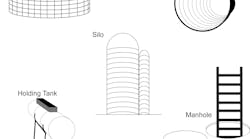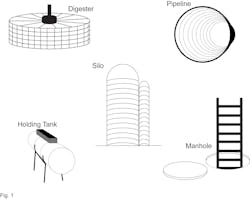About a million employees enter confined spaces every day, according to OSHA. In most cases, those workers complete their task without incident. But despite the many precautions in place, 70 workers per year never make it back out alive. Besides the ultimate price paid by workers, hefty fines arise if employers are found to be in noncompliance with OSHA regulations.
Early this year OSHA cited a division of Hormel Foods in Barron, Wisconsin, for 11 safety violations after a worker's arm was amputated below the shoulder while the individual was conducting cleaning activities in a confined space. OSHA proposed $318,000 in fines. Also this year, a Texas-based energy company was fined more than $70,000 for confined space violations involving hydraulic fracking tanks.
Material handling and logistics workers are among those affected, especially in workplaces that have:
∙ Silos or bins used to load rail cars or trucks;
∙ Processes where loading rail cars or trucks with a bulk material such as grain can result in worker engulfment;
∙ Storage tanks, silos, tanker rail cars or tanker trucks that need to be cleaned;
∙ Ships where workers enter their holds, tanks and storage compartments and suffocate, especially where fumigants are used.
Graphic Products Inc., which makes safety labeling for industrial workplaces, has released a free Confined Spaces Best Practices Guide to help workers, industrial hygienists and environmental health & safety coordinators deal with the dangers present in confined spaces.
By definition, confined spaces have limited or restricted means for entry or exit and are not designed for continuous occupancy. Workers can get trapped cleaning or doing repairs and maintenance in these spaces. These spaces often have limited oxygen, or the air is toxic or combustible.
The 18-page guide addresses:
∙ Identifying confined space locations
∙ Sign and labeling materials for harsh industrial environments
∙ Confined space permitting
∙ Training programs
∙ Supervisor and coordinator responsibilities
∙ Entry and evacuation operations and procedures
∙ Testing and monitoring equipment
∙ The benefits of using industrial printers to create large format signs and labels that are more likely to be seen




